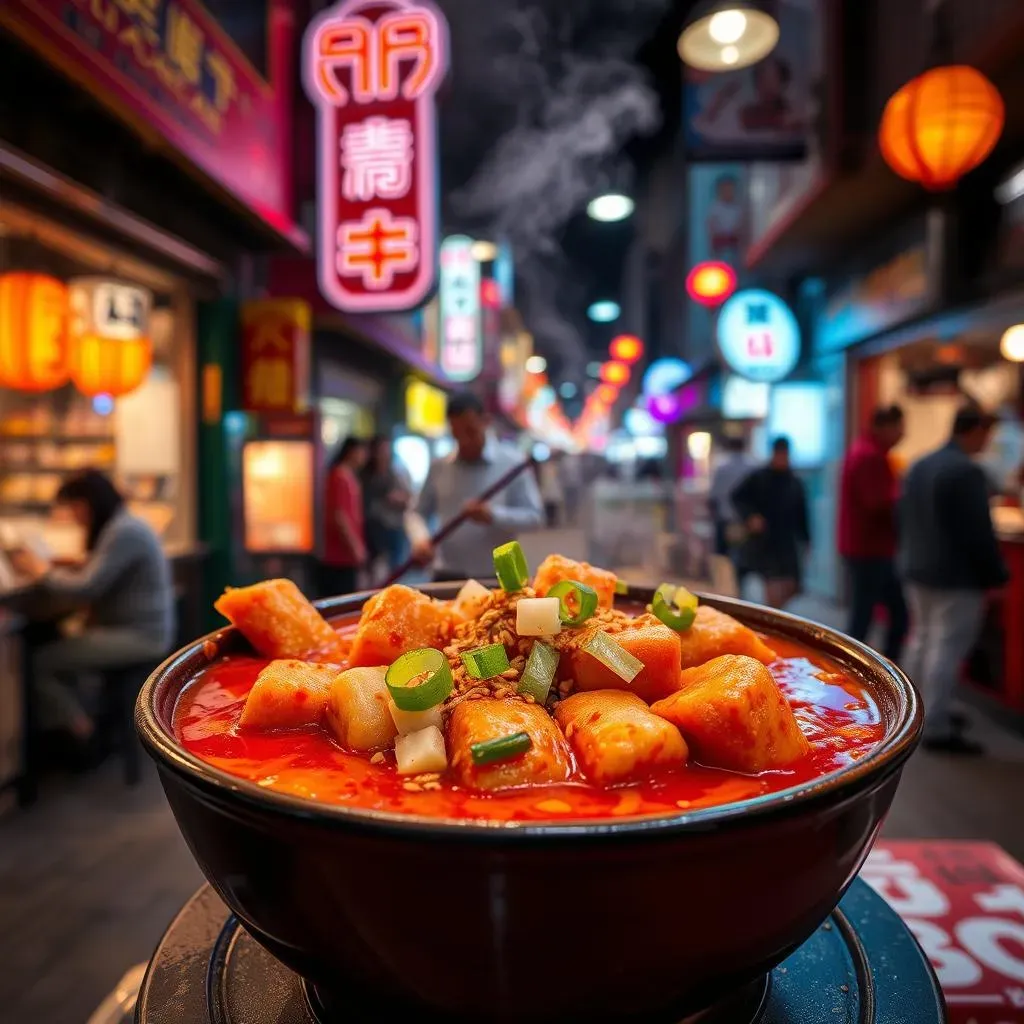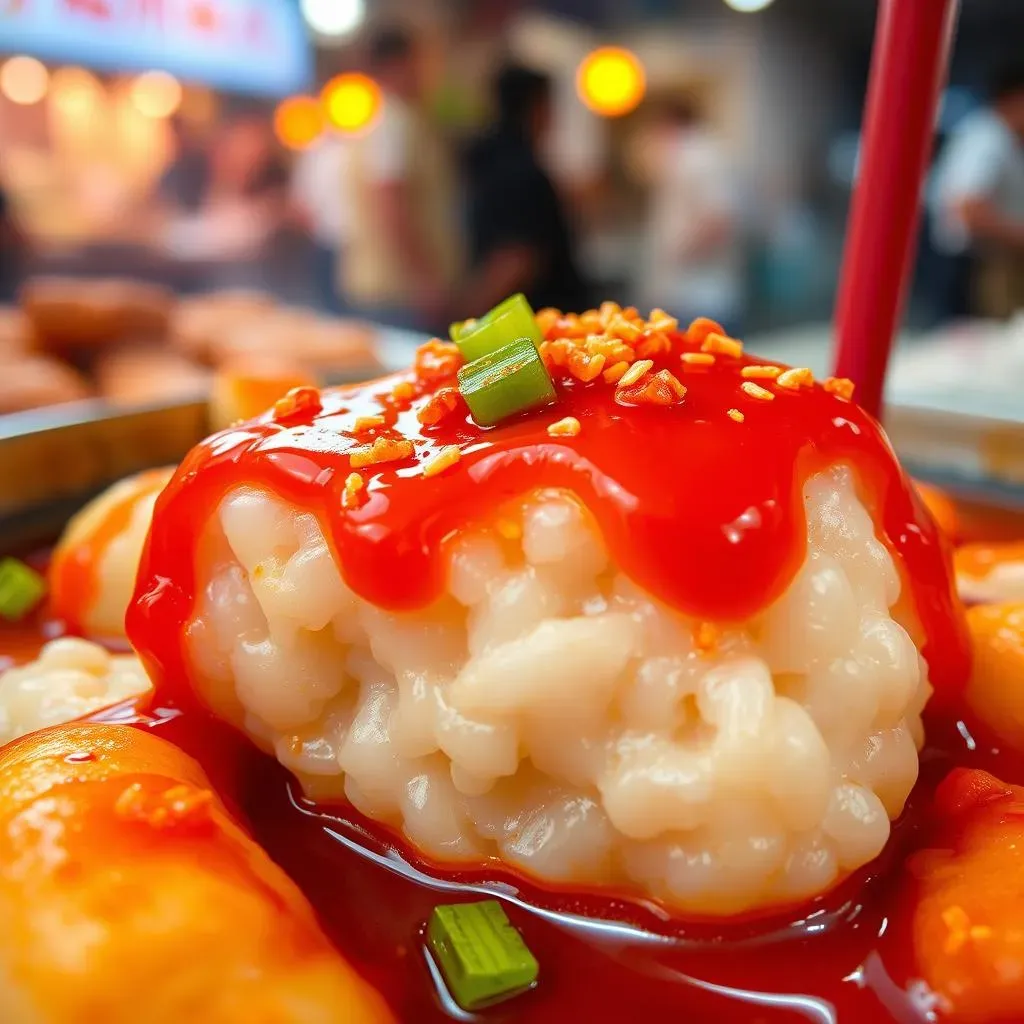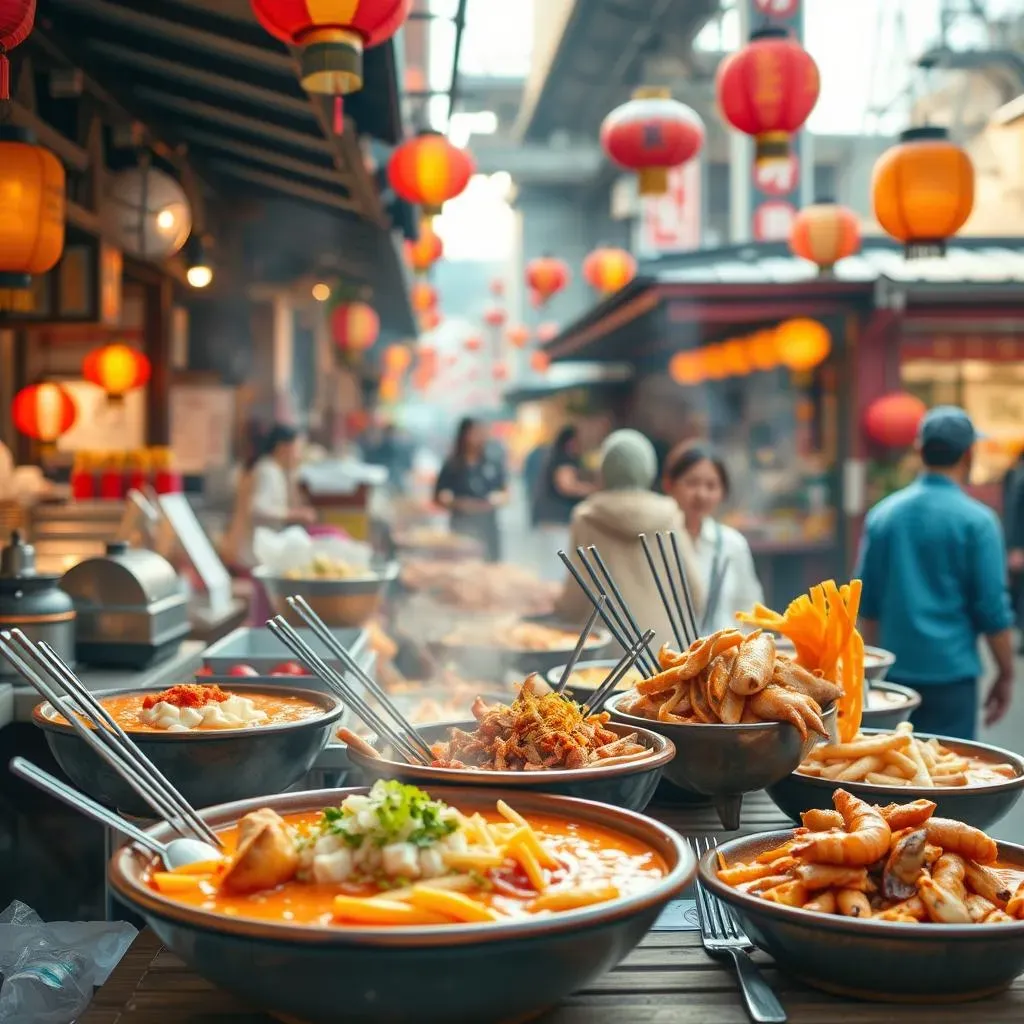Table of Contents
Get ready for a flavor explosion! This article is your passport to the exciting world of tteokbokki korean street food. We'll explore everything from its origins and unique taste to the endless variations and best places to savor this iconic dish. Prepare your taste buds for a journey through the vibrant streets of Korea, where the irresistible aroma of spicy, chewy rice cakes fills the air. We'll uncover the secrets behind its addictive appeal, highlighting the key ingredients and cooking techniques that make tteokbokki korean street food so special. Whether you're a seasoned foodie or a curious newcomer, this guide will equip you with the knowledge and inspiration to fully appreciate, and maybe even recreate, this beloved culinary experience. So, let's dive into the delicious details of tteokbokki korean street food and discover why it's captivated millions!
What is Tteokbokki Korean Street Food?
What is Tteokbokki Korean Street Food?
A Chewy, Spicy Delight
Imagine this: you're strolling through a bustling Korean street market, the air thick with the aroma of sizzling meats and sweet-savory sauces. Suddenly, you spot a vibrant red concoction bubbling in a large pot. That, my friend, is tteokbokki – a beloved Korean street food that's as addictive as it is delicious. At its heart, tteokbokki features chewy cylinders of rice cakes (tteok), simmered in a rich, spicy sauce. This sauce is typically made with gochujang (Korean chili paste), gochugaru (Korean chili flakes), and a touch of sweetness, creating a complex flavor profile that's both fiery and satisfying. The rice cakes absorb the sauce beautifully, resulting in a texturally delightful experience.
Think of it as a culinary adventure for your mouth! The soft, chewy rice cakes dance with the spicy, sweet, and savory notes of the sauce. It's a flavor party in every bite. Want to know more about the different types of Korean street food? Check out our guide to famous Korean street food for more delicious options!
Ingredient | Role |
|---|---|
Tteok (Rice Cakes) | Chewy base of the dish |
Gochujang (Chili Paste) | Provides spicy, savory flavor |
Gochugaru (Chili Flakes) | Adds heat and vibrant color |
Beyond the basic tteok and sauce, many variations exist. Some vendors add fish cakes (odeng), others incorporate vegetables like cabbage or onions. You might even find versions with ramen noodles, cheese, or even eggs! The beauty of tteokbokki lies in its adaptability. It's a blank canvas for culinary creativity, a testament to the dynamic nature of Korean cuisine. Looking for more recipe ideas? Check out our collection of Korean street food recipes!
But it’s more than just the taste. The experience of eating tteokbokki on the street, surrounded by the vibrant energy of a Korean market, is what truly elevates it. It's a cultural experience, a communal feast enjoyed by everyone from students to families. The best way to truly understand tteokbokki is to experience it firsthand. Find out more about where to find this culinary gem in our section on Korean street food markets.
- Chewy rice cakes
- Spicy gochujang sauce
- Often includes fish cakes
- Many regional variations
The Irresistible Taste of Tteokbokki Korean Street Food
The Irresistible Taste of Tteokbokki Korean Street Food
The Magic of Gochujang
Let's talk about the star of the show: the sauce! That vibrant red hue isn't just for looks; it's a flavor bomb waiting to happen. The foundation is gochujang, a fermented Korean chili paste with a depth of flavor unlike anything else. It's sweet, savory, and spicy all at once – a complex dance of tastes that keeps you coming back for more. The gochugaru (Korean chili flakes) adds another layer of heat, a fiery kick that awakens your senses. It's this perfect balance of sweet and spicy, savory and umami, that makes tteokbokki so addictive. Want to learn more about the history of this incredible dish? Check out our post on Korean street food history!
Think of it like this: imagine the smooth, rich texture of a perfectly ripe tomato, but with a fiery punch. That's gochujang. The gochugaru adds a little crackle, like a burst of sunshine on a chilly day. The sweetness balances the heat, creating a harmonious symphony of flavors that will leave you craving more. For even more delicious variations, explore our guide to popular Korean street food!
- Sweetness from sugars or fruits
- Savory depth from soy sauce or fish sauce
- Umami richness from anchovy stock
Beyond the Sauce: Texture and Experience
But the taste isn't the only thing that makes tteokbokki so irresistible. The texture is a key player in its addictive nature. Those chewy rice cakes are like little pillows of deliciousness, soaking up the sauce and offering a satisfying resistance with each bite. It's a playful dance between soft and firm, a textural adventure that complements the complex flavors. The addition of fish cakes (odeng) adds another dimension, providing a subtle, savory contrast to the rice cakes. Want to make your own tteokbokki at home? Check out our Korean street food recipes!
And let's not forget the experience! The bustling atmosphere of a Korean street market, the sight and smell of the bubbling tteokbokki, the friendly chatter of fellow food lovers – it all adds to the magic. It's not just about the food; it's about the community, the shared joy of indulging in a culinary delight. For a deeper dive into the cultural aspect, read more about Korean street food culture.
Texture Element | Description |
|---|---|
Rice Cakes (Tteok) | Chewy, soft, and pillowy |
Fish Cakes (Odeng) | Slightly firm, savory, and bouncy |
Sauce | Thick, coating, and flavorful |
Variations and Creative Twists on Tteokbokki Korean Street Food
Variations and Creative Twists on Tteokbokki Korean Street Food
Beyond the Basics: A World of Tteokbokki
So, you think you know tteokbokki? Think again! While the classic version is undeniably delicious, the beauty of this dish lies in its incredible versatility. It's a blank canvas for culinary creativity, with countless variations popping up across Korea and beyond. Imagine the classic spicy sauce, but now infused with the sweetness of kimchi, the creaminess of cheese, or even the savory depth of seafood. You might find versions with added vegetables like mushrooms, zucchini, or spinach, boosting the nutritional value and adding textural interest. Some adventurous chefs even incorporate ramen noodles, transforming the dish into a hearty, filling meal. For a look at regional variations, check out our article on Korean street food regions.
One popular variation is "rabokki," a delightful fusion of ramen and tteokbokki. The addition of chewy ramen noodles adds a whole new textural dimension, and the extra broth creates a more substantial dish. Then there's the "rose tteokbokki," which, despite its name, doesn't actually contain roses! Instead, it boasts a creamy, slightly less spicy sauce that appeals to a wider range of palates. And for cheese lovers, there's the "cheesy tteokbokki," where melted cheese adds a gooey, comforting element to the spicy rice cakes. To see how these variations look, check out our photo gallery on Korean street food photos.
- Rabokki: Tteokbokki with ramen noodles
- Rose Tteokbokki: Creamy, less spicy sauce
- Cheesy Tteokbokki: Melted cheese added
- Seafood Tteokbokki: Shrimp, mussels, or other seafood
Sweet, Savory, and Spicy: A Customizable Culinary Experience
The beauty of tteokbokki lies in its adaptability. It's not just about the heat; it's about the balance of flavors and textures. Some versions emphasize the sweetness, incorporating ingredients like honey or fruit purees to create a delightful contrast to the spice. Others focus on savory notes, adding ingredients like fish sauce or anchovy stock for a deeper, more umami-rich experience. Still others experiment with different types of chili peppers, adjusting the level of heat to suit individual preferences. Want to explore more about the rich culinary heritage? See our piece on Korean street food history.
Consider this: a dash of honey can transform the fiery punch into a delightful sweet-and-spicy dance. A splash of soy sauce adds a savory depth, while a sprinkle of sesame seeds provides a nutty aroma. These small changes can dramatically alter the overall flavor profile, creating a personalized culinary experience that caters to each individual's taste. For more inspiration on creating your own variations, check out our page on Korean street food recipes!
Flavor Profile | Ingredients |
|---|---|
Sweet & Spicy | Honey, fruit purees |
Savory & Spicy | Fish sauce, anchovy stock |
Extra Spicy | Gochugaru, other chili peppers |
Where to Find the Best Tteokbokki Korean Street Food
Where to Find the Best Tteokbokki Korean Street Food
Street Food Stalls: The Authentic Experience
For the most authentic tteokbokki experience, head straight to the street food stalls! These vibrant hubs of culinary creativity offer a taste of Korea's rich street food culture. You'll find them bustling with activity, the air filled with the tantalizing aroma of spicy rice cakes. Look for stalls with long queues – a sure sign of deliciousness! Don't be afraid to try different stalls; each vendor often has their own unique recipe and preparation methods, leading to a diverse range of flavors and textures. To find out more about specific stalls, check out our guide to Korean street food vendors.
Many stalls are located in popular tourist areas and near universities. These spots often have a high turnover of customers, ensuring that the tteokbokki is always fresh and hot. The experience itself is part of the appeal; you'll be surrounded by the sights, sounds, and smells of a bustling market, creating a lively and memorable culinary adventure. For a deeper dive into the atmosphere, see our article on Korean street food culture.
- Look for stalls with long queues
- Try different vendors for diverse flavors
- Many stalls are near universities and tourist spots
Restaurants and Food Courts: A More Refined Approach
While street stalls offer an authentic experience, restaurants and food courts provide a more comfortable and refined setting to enjoy tteokbokki. These establishments often offer a wider variety of options, including different spice levels and accompanying dishes. You might find unique twists on the classic recipe, such as fusion dishes or creative toppings. Many restaurants offer indoor seating, providing a respite from the weather and a more relaxed dining atmosphere. If you're interested in a specific type of restaurant, check out our list of Korean street food restaurants.
Food courts, often found in shopping malls and department stores, offer a convenient and diverse selection of Korean cuisine, including various tteokbokki options. They're a great place to sample different styles and flavors in a single location. Food courts usually have multiple vendors, allowing you to compare and contrast different approaches to this beloved dish. This can be a great way to find your personal favorite style of tteokbokki. To find out more about the food court experience, read our article on Korean street food markets.
Location Type | Pros | Cons |
|---|---|---|
Street Stalls | Authentic, lively atmosphere, often cheaper | Can be crowded, less comfortable seating |
Restaurants | More comfortable, wider variety, often cleaner | Can be more expensive |
Food Courts | Convenient, diverse options, often indoors | Can be crowded, less personal service |